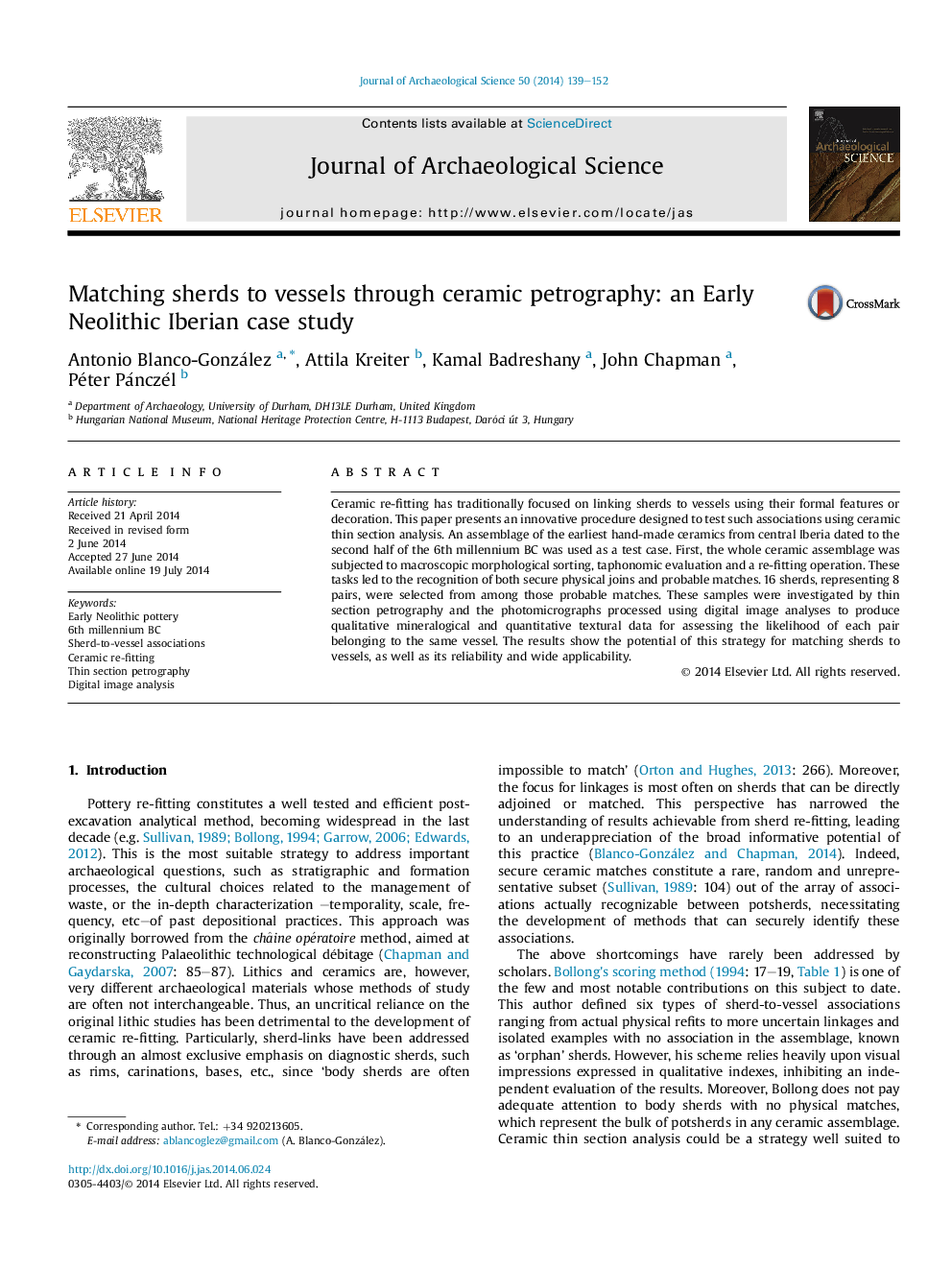| Article ID | Journal | Published Year | Pages | File Type |
|---|---|---|---|---|
| 7442893 | Journal of Archaeological Science | 2014 | 14 Pages |
Abstract
Ceramic re-fitting has traditionally focused on linking sherds to vessels using their formal features or decoration. This paper presents an innovative procedure designed to test such associations using ceramic thin section analysis. An assemblage of the earliest hand-made ceramics from central Iberia dated to the second half of the 6th millennium BC was used as a test case. First, the whole ceramic assemblage was subjected to macroscopic morphological sorting, taphonomic evaluation and a re-fitting operation. These tasks led to the recognition of both secure physical joins and probable matches. 16 sherds, representing 8 pairs, were selected from among those probable matches. These samples were investigated by thin section petrography and the photomicrographs processed using digital image analyses to produce qualitative mineralogical and quantitative textural data for assessing the likelihood of each pair belonging to the same vessel. The results show the potential of this strategy for matching sherds to vessels, as well as its reliability and wide applicability.
Related Topics
Physical Sciences and Engineering
Materials Science
Materials Science (General)
Authors
Antonio Blanco-González, Attila Kreiter, Kamal Badreshany, John Chapman, Péter Pánczél,
